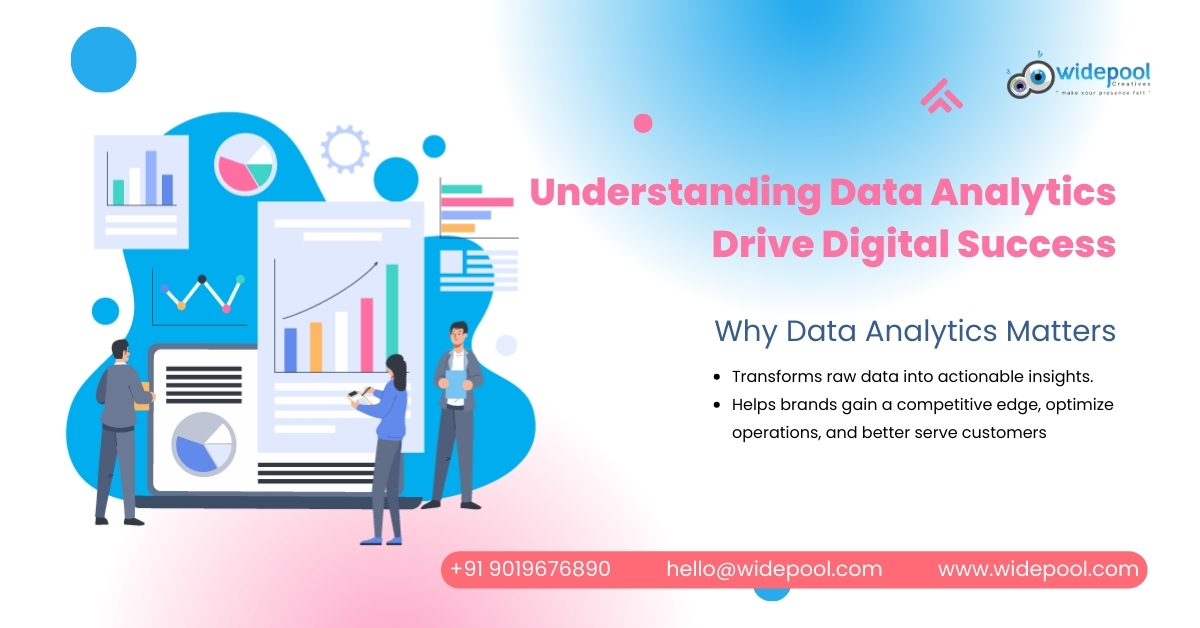In today’s digitised ecosystem, data is often touted as the new oil. Data in its raw form, like crude oil, is inherently worthless. Information has to be refined & processed for generating insights, which can drive digital success. Enter data analytics! Using the right metrics, brands can gain competitive advantage, optimize operations, and better serve their customers. So, understanding data analytics is very important. You must also know about using the right metrics to drive digital success.
Understanding Data Analytics
Data analytics consists of examining raw data & drawing conclusions about that info. This includes multiple techniques & processes such as statistical analysis, predictive analytics, data mining, and MP (i.e. machine learning). Its purpose is to fathom those patterns, connections, as well as trends, which can influence business strategies and decision-making.
Using Metrics to Drive Digital Success
Metrics happen to be measurable units. Professionals use these for tracking & assessing the status of your business processes. In the context of digital success, metrics are important as they give a factual basis for decision-making. They help businesses in the following ways:
- Making processes more effective by removing inefficiencies.
- Measure performance by establishing KPIs or key-performance-indicators to track progress towards specific goals.
- Identify opportunities by highlighting areas where the business is performing well and areas that need improvement.
- Enhance customer experience by understanding their behaviour and then tailoring the offerings.
Key Metrics to Drive Digital Success
Traffic Metrics
These are where the website traffic is coming from and how visitors are interacting with the website.
-
- Page Views: This helps assess the overall user engagement level.
- Unique Visitors: This provides an insight into your website reach.
- Bounce Rate: The percentage of visitors leaving the website after viewing just 1 page. A higher bounce rate indicates that the website content is not engaging or is not relevant.
Conversion Metrics
This is for tracking the actions that visitors take on the website. This is critical for measuring the success of marketing efforts.
-
- Conversion Rate: Percentage of visitors completing some action (like making the purchase or signing up for your newsletter). Higher conversion rate signifies an effective website or effective marketing campaign.
- CPC: The Cost Per Conversion is linked with gaining a conversion. Lowering CPC can improve the ROI of your marketing efforts.
- AOV: The Average Order Value is the average amount spent by users per transaction. Increasing AOV can considerably boost your revenue.
Engagement Metrics
These measure the effectiveness of content resonating with the online audience.
-
- Time on Site: The average time visitors are spending on the website. Longer times signify good content.
- Pages Per Session: The average no. of pages viewed in 1 session. This metric helps estimate the extent of visitor engagement.
- Social Shares: This metric tells the number of times any of your content is shared on different social media platforms. Higher metric amplifies your reach & credibility.
Retention Metrics
This helps you understand how well you are retaining your users. Key
-
- Customer Retention Rate: This is the percentage of customers continuing to do business with you over a certain period. Higher metric signals stronger customer loyalty.
- Churn Rate: This is the percentage of users who have stopped doing business with you over a certain period. Reducing this metric is crucial for sustained business growth.
- CLV: The Customer Lifetime Value happens to be the total revenue that is expected from a user over the time of their relationship with your brand. Increasing CLV significantly impacts long-term profitability.
Steps to Effectively Implement Data Analytics for Digital Success
- Define your goals.
- Choose the right tools.
- Collect data.
- Analyse data.
- Act.
- Continuously improve.
In today’s digitally driven age, understanding data analytics is necessary for brands seeking to flourish. Remember, the journey of data analytics is constant, and the more you refine your approach, the better your rewards will be! Leveraging SEO expertise of Widepool Creatives can considerably quicken your website’s rise to the top of search results.

